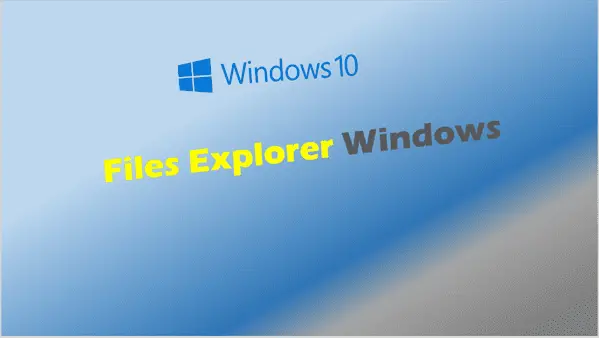Adding Google Drive to Your File Explorer Simplified
Simplify your file management process by adding Google Drive to File Explorer and harnessing the power of cloud storage.
Google Drive, with its vast capabilities in file storage, sharing, and synchronization, has become an indispensable asset to many users worldwide.
Leveraging the power of Google Drive from your desktop is now easier than ever with Google Drive for Desktop, which offers seamless integration with your device’s File Explorer.
This configuration conveniently enables you to manage both your online and offline files directly from your desktop.
This article will walk you through the depth and breadth of the Google Drive platform and delineate the step-by-step process of installing and setting it up on your desktop.
Furthermore, it will shed light on how to add Google Drive to your File Explorer for a more streamlined workflow.
Understanding Google Drive Platform
Google Drive – Your Ultimate Cloud Storage Tool
With the ever-evolving landscape of technology, Google, a monolith in the tech industry, has launched Google Drive and it’s changing the way we store and access data. Google Drive is a robust file storage and synchronization platform that lets you put all your stuff in one place, so you can access and share it from anywhere, at any time.
As an avid tech aficionado, you’re probably asking: “So how does it work?”
Once you create a Google Account, you’re automatically given a whopping 15 gigabytes of free storage space on Google Drive. This space isn’t just for your Drive files, it’s also shared with Gmail and Google Photos. Need more storage? Google offers additional plans for purchase, providing options up to a mammoth 30 terabytes!
Google Drive is compatible with all major platforms including Windows, Mac, Android, and iOS. It’s easy to upload files and folders to Google Drive. You just need to drag and drop files into the Drive webpage, or you can use the “New” button to create new Docs, Sheets, Slides, Forms, and Drawings, or to upload existing files.
With Google Drive in your tech arsenal, collaboration is a breeze. Many users can collaborate on a single document in real-time, viewing edits as they happen and even discussing changes in a built-in chat. Google Drive also keeps track of changes and revisions in a document history, which can be viewed and restored at any time.
One of the powerful benefits Google Drive provides is its seamless integration with other Google Services, such as Google Docs and Google Sheets. You can edit your documents directly in your browser, without downloading any additional software. Any changes you make are saved automatically and synced across all your devices, thereby ensuring you always have the most recent version of your work.
For the security-minded, Google Drive encrypts you data while it’s in transit, making it more secure and safe from unauthorized access. With two-step verification, you can add an extra layer of security to your data.
There’s no more need to email files to yourself or carry around a physical USB drive. Google Drive, with its multiple functionalities, user-friendly interface, robust storage options, and superior integration capabilities, offers an excellent platform for you to manage your files more effectively.
And so, here we have it: Google Drive, a tool that’s transforming the way we approach data management and collaboration. It’s a dynamic solution in an increasingly remote and digital era. So go ahead and start utilizing Google Drive to streamline your digital life. Embrace the future of cloud storage, today.

Installation and Setup of Google Drive for Desktop
Since we have navigated through the background and varied utilities of Google Drive, let’s dive right into the nuts and bolts of installing and setting up Google’s versatile cloud storage tool on your desktop.
Before we start, you will need a Google account. If you don’t have one, take a moment to set one up on the Google sign up page. This simple step provides you access not only to Google Drive but also to myriad other Google services.
Step 1: Download Google Drive
To initiate the process, go to the Google Drive Download page. Once there, click on the “Download” button under the “Backup and Sync” section. The download process will begin, and a file titled ‘installbackupandsync.exe’ will appear in your download folder or at the bottom of your browser window.
Step 2: Install Google Drive
Open the downloaded file by double-clicking. A Google Drive installation window will appear. Click on the “Agree and Install” option. Windows might ask for permission to make changes to your device. Grant the necessary permissions and allow the installation to commence. It takes a few minutes to install, depending upon your system speed.
Step 3: Setting up Google Drive
Once installed, Google Drive, labeled as “Backup and Sync from Google” will appear in your system tray. Click on the icon to open it. Log in using your Google account credentials, and you will be directed to a Preference window.
Step 4: Preferences
In the Preference window, you’ll define where files from your Drive will be stored on your computer. You can either synchronize all files or select specific ones. There’s more. If you have folders on your computer that you wish to back up to Google Drive, you can select these under the tab called “My Computer.”
Upon successful setup, Google Drive will create a synced folder on your system. This become location where every file you place will be synchronized to your Google Drive in real-time. In fact, you can access it anytime through the Google Drive icon in your system tray.
In conclusion, setting up Google Drive on your desktop follows a straightforward process. It provides an efficient, automated way of storing important files, eliminating the need for manual transfer of content. Moreover, the real-time synchronization ensures that your files are always up-to-date, enhancing your productivity and creating a reliable cloud backup.
The beauty of Google Drive lies not just in the storage capabilities, but in the seamless integration into the expansive Google ecosystem. The analytical, tech-savvy, and forward-thinking individual will find immense value in the integration and automation features, creating a smooth workflow that champions efficiency.
In essence, setting up Google Drive on your desktop is a smart move in the journey towards productivity and simplicity in this digital age. Now, armed with these steps and insight, go ahead and amplify your digital efficiency game with Google Drive.

Adding Google drive to file explorer
Integration of Google Drive to File Explorer
Moving onward from the beneficial aspects of Google Drive and having it setup on your system, there’s immeasurable productivity to be gained by integrating Google Drive directly into your File Explorer. This fusion is an excellent system optimization that will enhance access, keep your files at your fingertips, and further streamline your workflow. Without further ado, let’s proceed.
First off, know this division is facilitated via a service called Google Drive for desktop, formerly known as Backup and Sync. To kickstart the process, verify that you’ve Google Drive for desktop installed on your device. If not, head over to Google’s official page and download it.
Once you’ve installed Google Drive for desktop, sign in with your Google account. Post sign-in, look for the Drive for desktop icon on your system tray or menu bar. Click the icon and then click on the gear icon to open Settings.
In the Settings, under the Google Drive tab, you’ll find the option “Mirror files from Google Drive to your computer.” Select this option to sync Google Drive with your File Explorer.
Upon selection, a Google Drive shortcut will appear in your File Explorer. This enables direct access, navigation, and management, the same as any other local folder!
If some files or folders are less frequently used, you may prefer to keep them in the cloud and save space on your local storage. Google provides us with this splendid feature termed Drive File Stream.
Under the same Google Drive tab in Settings, you’ll find the option “Stream files with Google File Stream.” Select it and the less-used files will remain online until you need them. They’ll be downloaded when accessed and cleaned from your local storage when done.
Effectively, Google Drive for desktop blurs the lines between local and cloud storage. It gives you full control over whether you want to keep some, none, or all of your files on your local storage, backing up the rest in the cloud. Your files exist where you want them, and they’re always backed up in the cloud.
Remember, this integration is dynamic. Any changes you make in the Google Drive folder on your File Explorer will sync across all your devices. So, whether you’re adding, deleting, or organizing files, it’s replicated, saving you from needless rainy-day problems.
With these steps, your Google Drive is now a natural extension of your File Explorer – an epic fusion yielding ready access and optimized efficiency. Recurring manual updates are a thing of the past as the dynamic sync keeps your workflow updated!
This integration could be the winning ace up your productivity sleeve. Go ahead, give it a shot, and commandeer your files like never before! Your computer will thank you, and so will your productivity charts.

Indeed, Google Drive serves as an efficient and versatile platform for storing, sharing, and synchronizing files.
Understanding its nuances and employing its desktop version can significantly enhance one’s productivity by making the files readily accessible and manageable from the File Explorer.
We’ve guided you through the installation and setup process, and elucidated the ways you can integrate Google Drive into your File Explorer.
Armed with this knowledge, you are well prepared to explore the possibilities of Google Drive and exploit its potential to its fullest for a smoother, more coordinated digital file management experience.
Related Posts:






